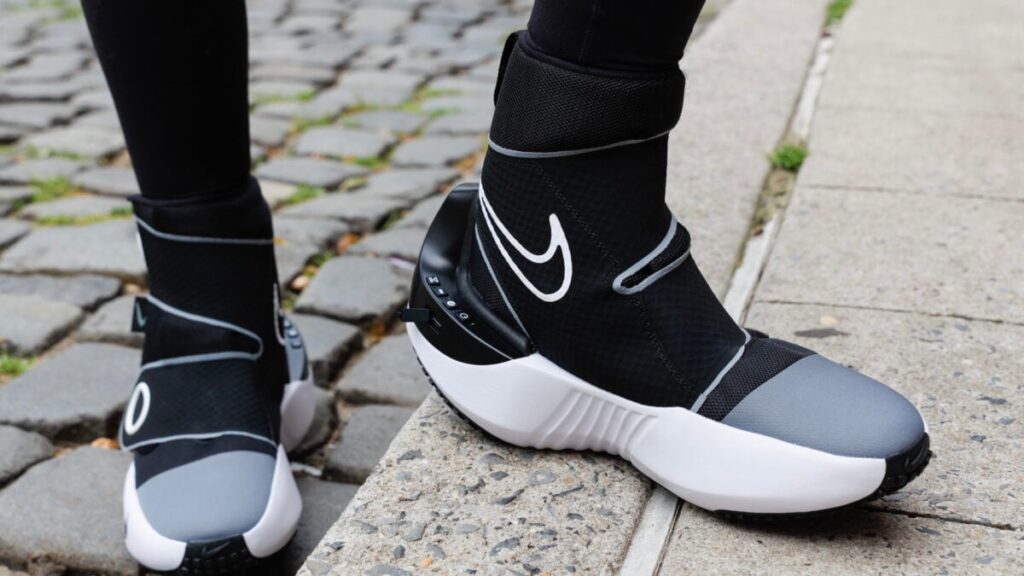
If you’re an athlete, you likely remember the period between 2015 and 2020 as the era when recovery tools became indispensable. During those years, the fitness community witnessed a surge in the popularity of devices like Normatec Legs and massage guns. Fast forward to 2025, and recovery has become a vital component of training for athletes ranging from professionals to amateurs across nearly every sport. This shift has been accompanied by a proliferation of innovative recovery technologies, including portable cupping, red light therapy, TENS devices, and infrared sauna blankets. The latest addition to this lineup is the Hyperboot, a high-tech recovery boot priced at $899.
The Hyperboot is a collaborative effort between Nike and Hyperice, combining Nike’s expertise in shoe design with Hyperice’s advanced recovery technology. The result is a unique product that merges the comfort of a supportive recovery shoe with the functionality of a compression boot, specifically targeting the foot and ankle.
The Technology Behind the Hyperboot
At first glance, the Hyperboot’s bulky design may seem unusual, resembling gear fit for a moonwalk. However, its size is integral to its function. The boots incorporate the same air compression technology found in Normatec boots, a result of Hyperice’s acquisition of Normatec in 2020. Known as intermittent pneumatic compression (IPC) devices, these boots use air pumps and chambers to create a pattern of inflation and deflation. This process is designed to enhance blood flow and lymphatic fluid movement, promoting better circulation and faster recovery—all while the user is at rest.
In addition to compression, the Hyperboot introduces a heat feature. The combination of heat and compression is intended to further increase blood flow and relaxation, offering a soothing experience akin to a warm foot bath without the mess.
Experiencing the Hyperboot
The Hyperboot is designed for both recovery and warm-up, making it versatile for use before and after workouts. Over a two-week trial, the boots proved effective in enhancing the feeling of recovery and readiness for subsequent workouts. The setup is straightforward, with USB-C charging and simple controls for compression and heat intensity. However, the highest heat setting can be overwhelming, suggesting that users may need to adjust to their comfort level.
Despite their size, the boots are comfortable enough for indoor use, allowing for activities like cleaning or cooking. They are also TSA-approved for travel, although their appearance may draw attention in public settings.
Do Hyperboots Enhance Recovery?
While the Hyperboot undoubtedly provides a pleasant experience, the question remains whether it significantly aids recovery. The technology behind compression devices was initially developed for medical purposes, such as preventing blood clots in immobile patients. The adaptation for athletic use raises questions about its effectiveness compared to simple physical activity like walking.
“There appear to be no substantial benefits of IPC in promoting recovery,” concluded a 2020 study in the International Journal of Exercise Science.
Furthermore, a 2024 meta-analysis in the journal Biology of Sport found that while compression boots might reduce perceived soreness, their impact on muscle recovery is variable. As Christie Aschwanden, author of “Good to Go,” highlights, measuring recovery is complex, often relying on subjective feelings rather than concrete physiological markers.
Despite these uncertainties, the Hyperboot provides a subjective sense of improved recovery, making workouts more enjoyable. However, the high price point may deter some potential users, especially if similar benefits can be achieved through less costly means, such as walking.
The Future of Athletic Recovery
The introduction of the Hyperboot reflects the ongoing evolution of recovery technology in sports. As athletes continue to seek ways to optimize their performance, innovations like these will likely play a significant role. However, the balance between technological advancement and practical, cost-effective solutions remains a key consideration.
As the market for recovery tools expands, the challenge will be to substantiate claims with scientific evidence, ensuring that athletes can make informed decisions about their training and recovery strategies. Meanwhile, the Hyperboot stands as a testament to the potential of technology to enhance the athletic experience, even as questions about its necessity and efficacy persist.





